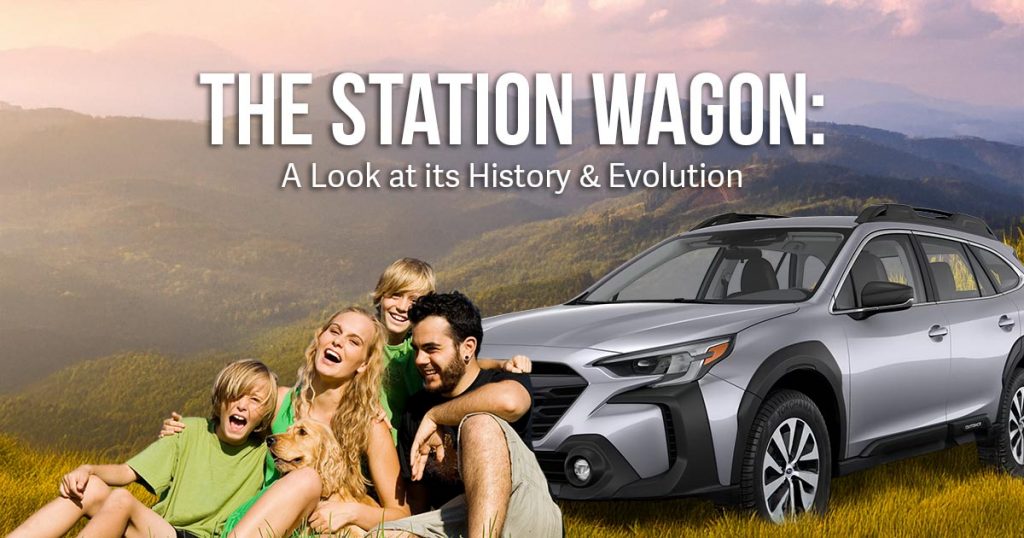The station wagon is one of the most practical cars in automotive history, but its popularity has gone through a lot of ups and downs over the years. It started as a simple vehicle to carry luggage and passengers and turned into a family favorite before eventually losing its spotlight. Yet, station wagons still hold a unique place in car history. But why is it called a station wagon, and where did the name station wagon come from?
Why Are Station Wagons Called Station Wagons?
The name “station wagon” actually has a very straightforward origin. Back in the early 1900s, these vehicles were specifically made to carry people and luggage to train stations. Cars at the time were often referred to as “depot hacks” because they transported goods and passengers for train travel. The term “station wagon” naturally followed as these vehicles became more widely used, blending the words “station” and “wagon” to describe their purpose simply.
The first factory-built station wagon was the 1923 Star Depot Hack, making it the first time these cars moved from handmade, wooden designs to something produced on a larger scale.
Types of Station Wagons Through the Years
Station wagons have taken many forms over the decades, adapting to the times and consumer preferences. Here’s a breakdown of some standout wagons and what made them special.
1. 1920s–1930s | Wooden Wagons (Woody Wagons)
Early wagons, like the 1923 Star, were made almost entirely of wood. They were great for transporting goods but required a ton of upkeep since the wood didn’t last long in bad weather.
2. 1940s–1950s | The Steel Wagons
Automakers like Chrysler introduced steel-bodied wagons such as the 1941 Chrysler Town & Country. These wagons were more durable and often kept the wooden “look” through decorative side paneling.
3. 1960s–1970s | Family Favorites
This is when station wagons really became iconic. Models like the Ford Country Squire and the Oldsmobile Vista Cruiser were designed with families in mind, offering lots of space and even cool innovations like rear-facing third-row seats. The Vista Cruiser even came with skylights so passengers could enjoy the view. This era shaped the way we think about wagons as reliable family movers.
4. 1980s | Compact Wagons
By the 1980s, wagons had started to shrink. Rising gas prices and competition from smaller cars led to more compact options, like the Subaru GL Wagon and the Honda Civic Wagon. These models focused on practicality and fuel economy, making them a good choice for small families or city driving.
5. 1990s | Performance Wagons
Wagons got a sporty makeover in the 1990s. The Volvo 850 T5-R and the Audi RS2 Avant added speed and handling to their utility. These cars proved that wagons didn’t have to be boring, even though SUVs were quickly becoming more popular.
6. 2000s–Today | Modern Crossovers and Wagons
7zzDo they still make station wagons? Yes, but they look different. The Subaru Outback, for example, is a modern car that mixes the low profile of a wagon with the rugged capability of an SUV. High-end wagons like the Volvo V90 and Audi RS6 Avant also cater to luxury markets today, though they’re not as common as they once were.
Why Did Station Wagons Go Out of Style?
Station wagons were the king of family vehicles for decades, so why did they decline? The first big blow came in the 1980s when Chrysler introduced the minivan. These vehicles offered more headroom and sliding doors, which were ideal for large families. Then, SUVs came along in the 1990s, adding a rugged, adventurous image that wagons couldn’t match.
Cultural perceptions also hurt wagons. People started associating them with old-fashioned, uncool family life, and automakers avoided using the term “station wagon” entirely. Instead, they called them crossovers or sportwagons, hoping to appeal to younger buyers.
What Is a Station Wagon Today?
Simply put, a station wagon is a vehicle with a long roofline, a hatch-style rear door, and lots of storage space. It combines the handling and comfort of a sedan with the roominess of an SUV. And while they’re not as common now, wagons are still loved by people who want a practical yet stylish car for carrying people and cargo. Today’s wagons, like the Audi Allroad or Subaru Outback, blend old-school practicality with new tech and luxury to stay relevant.
The Legacy of the Station Wagon
From their early wood-paneled days to the sleek, high-performance wagons of now, station wagons have continuously evolved to meet changing needs. Whether you remember them packed with suitcases on a family vacation or see them as capable modern vehicles, there’s no denying their impact on automotive history.
While no longer dominating driveways, wagons remain a symbol of timeless utility and smart design. Every generation has found a way to reinterpret what a station wagon can do, proving that this car is far from finished. Maybe it’s not just a car from the past; it’s a smart option for the future.
